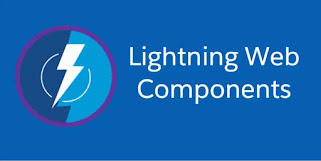Introduction to Lightning Web Component(LWC)
What is the Lightning Web Component(LWC)?
LWC is a new programming model to create lightning components. It was introduced in Feb 2019.
Lightning Web Components are being used by developers for creating UI.
Lightning Web Components are custom HTML elements built using modern HTML and JavaScript. These components can coexist and interoperate with Aura components on a single page, seamlessly appearing as Lightning components to administrators and end users.
Lightning Web Components are available in Enterprise, Performance, Unlimited, and Developer editions of Salesforce.
Built upon core Web Components standards, Lightning Web Components focus on delivering optimal performance in browsers supported by Salesforce. By leveraging native browser capabilities, these components are lightweight and provide exceptional performance. The majority of the code you write for Lightning Web Components consists of standard JavaScript and HTML.
Benefits of Using LWC
Easy to Learn
The Lightning Web Components uses HTML, CSS & Javascript language. This means that it is easier to learn and use for developers who are already familiar with these technologies.
Better Security
Salesforce provides Lightning Locker, a security architecture for Lightning components. It promotes best practices by isolating components from others belonging to a different namespace.
No need for a Developer Console
Days working in Developer Console are long gone. Salesforce is promoting repository-based development that lets developers build components in their local drive, and then push their code to the repository, scratch Org, or to a Salesforce Org. Developers now have a lightweight open source IDE “Visual Studio Code” provided by Microsoft, and can utilize Salesforce DX, where each developer can spin up their own developer org (called scratch org), and work independently.
Debugging
Another benefit is debugging. It helps to find errors and enables developers to complete tasks within the assigned duration.
Testing
Salesforce recommends using Jest because writing tests within this framework is extremely easy.
You can refer below link to understand Debug Lightning Web Components. https://developer.salesforce.com/docs/component-library/documentation/en/lwc/debug_intro
How to Start Learning LWC?
These are some steps that will help you in learning LWC
- Install VS Code.
- Setup VS Code for Salesforce Development.
- Start with JavaScript Basics.
- Develop and run code here to understand.
reference module: Quick Start Lightning Web Components
How to test LWC?
We use JEST for testing lightning web components.
JEST is a JavaScript testing framework commonly used for unit testing Lightning Web Components (LWC) in the Salesforce ecosystem. It offers features like test suites, test cases, assertions, mocking, and code coverage reporting. With JEST, developers can easily write and execute tests to ensure LWC components behave as expected, handle data correctly, and respond to user interactions appropriately. JEST simplifies testing setup, provides a powerful test framework, enables easy mocking, offers built-in assertions, and generates code coverage reports. It helps maintain code quality, catch bugs early, and ensure reliable LWC development.
Check the below links for Lightning Web Components(LWC) Modules by Salesforce Trailhead.
Developer Guide For LWC
Lightning Design System
The Lightning Design System (LDS) is Salesforce's comprehensive set of guidelines, resources, and components for creating visually appealing and consistent user interfaces. It offers a modern visual style, responsive and accessible design principles, reusable components, extensive documentation, and seamless integration with Salesforce applications. The LDS promotes efficiency, consistency, and user satisfaction in building Salesforce-based solutions.
SLDS (Salesforce Lightning Design System)
SLDS is a collection of guidelines, resources, and CSS framework provided by Salesforce for creating visually appealing and consistent user interfaces in Salesforce applications. SLDS provides a set of standardized design patterns, components, and styling guidelines that align with the Salesforce Lightning Experience and promote a cohesive user experience across the Salesforce platform. Developers and designers can utilize SLDS to build intuitive and visually pleasing interfaces that adhere to Salesforce's design language and best practices.
You can use and learn more about SLDS from here.
You can use and learn more about SLDS from here.
Salesforce Summer ’23 Release Notes
LWC Structure
Let's Conclude
Overall, the benefits of creating custom Salesforce applications using LWC are huge.
From its modern web standards and user experience to its better performance and security, LWC offers a powerful and effective way to build custom applications on the Salesforce platform.
stay connected to learn more about LWC...




Comments
Post a Comment